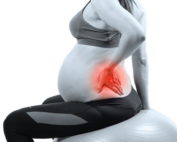What is gout?
Gout is a complex form of arthritis that’s caused by the accumulation of uric acid crystals into joints and surrounding tissues, leading to painful and debilitating symptoms. We’ve recently had a few patients through the door with symptoms of gout and we think it would be useful for you to know what those symptoms are. Side note- it can be in any joint- not just the big toe!
Signs and Symptoms of Gout: Gout typically manifests with acute and recurrent attacks, and its symptoms can vary in severity. The signs of gout often include:
- Sudden and Intense Joint Pain: The hallmark symptom of gout is the sudden onset of severe joint pain, typically affecting one joint at a time. The most common location is the big toe, but gout can also affect other joints like the ankles, knees, wrists, and fingers.
- Redness and Swelling: Affected joints become swollen, tender, and inflamed, causing the skin around the area to appear red and shiny. The joint may also feel warm to the touch.
- Limited Range of Motion: During a gout attack, the affected joint’s mobility is significantly restricted due to pain and inflammation.
- Fever and Chills: In some cases, gout attacks may be accompanied by a low-grade fever and chills, indicating an inflammatory response (inflammation causes pain).
- Tophi Formation: Over time, if gout is left untreated or poorly managed, uric acid crystals may accumulate and form small, chalky lumps called tophi. These tophi can develop beneath the skin, around the joints, and in other tissues, causing joint deformities.
Risk Factors for Gout:
- Diet: A diet high in purines increases the risk of gout. Purines are substances found in certain foods, such as red meat, organ meats, seafood, and some types of alcohol (especially beer). When the body breaks down purines, uric acid is produced, leading to higher levels of uric acid in the blood. So if your in a lot of pain don’t think that sitting with a burger and a pint will do you any favours!
- Obesity: Being overweight or obese is linked to an increased risk of gout. Excess body weight can lead to higher levels of uric acid production.
- Family History: A family history of gout increases the likelihood of developing the condition. Genetic factors can influence the body’s ability to process and excrete uric acid.
- Gender and Age: Gout is more common in men, particularly between the ages of 30 and 60. However, post-menopausal women may also be at higher risk due to hormonal changes.
- Medications: Certain medications, such as diuretics (water pills) used to treat hypertension and certain conditions, can elevate uric acid levels, increasing the risk of gout.
- Medical Conditions: Underlying medical conditions like kidney disease, high blood pressure and diabetes can disrupt uric acid metabolism, contributing to gout development.
- Alcohol Consumption: Excessive alcohol intake, particularly beer and spirits, can lead to higher uric acid levels and raise the risk of gout.
Osteopathy & Gout
Early diagnosis and effective management, including lifestyle changes and medications, are essential in controlling gout and preventing long-term complications. If you suspect you have gout or experience any of the symptoms mentioned, consult a healthcare professional for accurate diagnosis and appropriate treatment.
Osteopaths are good at spotting the signs and symptoms but ultimately the best way to diagnose gout is via your GP through blood tests. The earlier the diagnosis then the sooner treatment and better the outcome.
Latest News
Welcome Audrey!
In the fast-paced and demanding world we live in, stress and chronic pain have become increasingly prevalent, affecting millions [...]
Osteopathy For Children & Teenagers
The latest research suggests that one in five teenagers suffer from musculoskeletal pain to the point that they have [...]
The Role of Osteopathy in Post-partum Care
The post-partum period, sometimes referred to as the "fourth trimester," is a critical phase in a woman's life, marked [...]
Osteopathy for alleviating pain during pregnancy
Pregnancy, places substantial physical demands on a woman's body. As the foetus grows and the body undergoes hormonal changes, [...]
Opening Hours Update
Our latest opening hours are as follows: Monday 08:00-18:00 Tuesday 08:00-18:00 Wednesday 08:00-18:00 Thursday 10:00-19:30 Friday 08:00- 18:00 Saturday [...]





